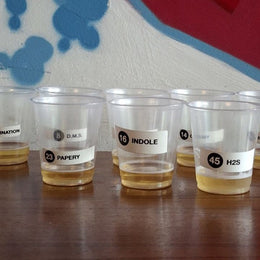
Our inspiration for most of our blog posts comes from questions that we get from our customers, and this question in particular comes up rather often. It was also a behaviour that we notice, that some customers will choose bottles over cans and we wonder, does it really matter?
It seems like the way people enjoy their beers has a certain hierarchy with the draft being the ultimate first choice, followed by bottles and then cans. There is some truth to this since the craft beer scene is overwhelming with more and more taprooms popping up, and draft beer has long been known for being fresh, great mouthfeel with a foamy head. However, there is also an increase in many craft breweries packaging their beers in cans nowadays. Breweries may also have a slightly different recipe for various packaging and you may have noticed an intentional difference. Hence, is draft beer still the best?
Unfortunately, the answer is not as straightforward. The style of the beer, especially the hop content as well as the packaging does affect the shelf life of the beer. Hops, being a crucial ingredient in beer, is highly prone to oxidation. Once a keg is tapped in, oxygen makes its way in and begins its process of slowly degrading the flavour.
With that said, let’s take a closer look at each of these packaging and weigh out their pros and cons.
1. Kegs
While many assume that draft or tapped beers are the freshest, it is only true when the keg is newly tapped and that the lines are kept clean. In many cases, they are not. Neglected draft beer dispensing systems are prone to pests such as microbes, proteins, and mineral deposits that can degrade even the world’s best beer. Squeaky clean lines are as important to beer’s flavour as its ingredients.

Dirty draft lines often result in a sour aftertaste due to acetic acid and a buttery flavour called diacetyl from the bacteria build-up within the plastic tubing, this can happen within a matter of days. With dining restrictions in place across F&B establishments, draft beers no longer move as fast as they previously do. Perhaps that should be something to think about on your next visit to a taproom.
But, as long as you’re in a responsible establishment that values hygiene and cleanliness with clean keg lines, your draft beer is generally going to be better than a bottle or can. However, some beers, like barley wines and Belgian beers, will taste better after they have been aged, so there is a distinct possibility that it might be better in the bottle.
2. Bottles
One of the most traditional packagings for storing alcoholic beverages, the beer bottle has become an icon across establishments and is easily recognisable as a symbol.
Glass bottles were used to hold beer as it was found to be the best material to keep the liquid fresher for a longer time. However, it was found that clear glass often resulted in off flavours due to light penetration. UV rays can quickly damage the acids found in hops and trigger a chemical process to produce a smell that closely resembles a skunk.
Glass was initially used to hold beer because it was found to be the best material for keeping the liquid fresher for longer periods of time. But it took some time to come to the conclusion that clear glass was not the way to go when it came to beer. Clear glass became a problem. Clear bottles of beer left in the sun quickly turned sour. The smell and taste of the beer resembled the smell of a skunk. This is also known as light-struck.
Prior to the innovations of the modern beer bottling industry, manufacturers had to come up with a solution to prevent UV rays from ruining their batches. They discovered utilising brown beer bottles would shield the beer from UV rays. Brown beer bottles are still used today by many of the most popular beer producers.
3. Cans
Last but not least, we have canned beers. Most craft breweries are moving towards canning beers as they allow for a proper seal. Flushing the cans with carbon dioxide and sealing it keeps the beer fresher and at the same time prevents light from penetrating.
There is also a reason why most people pack canned beers in cooler as well, they tend to be lighter as compared to their bottled counterparts, which are also heavier and more fragile. Besides being lightweight and compact, one of the more important reasons is that it takes less fuel to ship them and they have a more robust recycling program as compared to glass.
Most people also believe beer tastes weird out of a can, with that unexplainable metallic taste. However, blind taste tests have shown that there’s no consistent difference between the flavours of bottled and canned beer. Some expect beer from a can to have that mass-market, uniform, cheap taste to it, so they do not even want to go near a can. However, can have been known to be much better for beer storage than bottles.
In conclusion, regardless of whether you enjoy your beer from tap, bottles, or cans, it really depends on the situation. But to say that packaged beers are inferior to draft beer is baseless and doesn’t make sense. Here at AMLT, we offer both bottled and canned versions of some of the most amazing beers. So if you feel strongly about bottled beers being better than cans, sure. We have that. If you think otherwise, no problem, we have it as well.
We may also once in a while run special promotions for free draft beers in-house so do follow our IG at @amltsg and be kept up to date when we do so!







